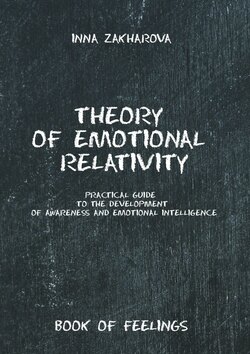Читать книгу Theory of emotional relativity. Practical guide to the development of awareness and emotional intelligence - Inna Zakharova - Страница 25
Fear
Fear. How to Help others?
ОглавлениеIf there is a person near who is in a state of anxiety or fear, the first thing we can do to help is to talk with him, so that he speaks out loud all his fears, feelings. We should draw his attention to the body and its condition gently. Ask some questions:
In relation to what things do you have such a state now?
What exactly are you most afraid of?
When a person lists everything that worries him, he gradually begins to free himself from all these fears. At the same time, when you ask questions, he receives emotional support from you, and support is also a resource that satisfies the need for security. There is a feeling that he is not alone in coping with this situation, but as if we are doing it together. It also relaxes.
After a person has realized his fears, you can ask questions that are listed in the strategy for yourself:
How real are these dangers?
What do you need to overcome this danger?
What resources do you have?
Where can you take resources that you don’t have?
You can help a person to make a plan where to get the necessary resources. And then it would be great to turn on the body: go for a walk or run, do some work in the garden together, change the position of the body to move actively. After some body activity, a person will definitely calm down.
When a person calms down, ask him the following questions:
What do you want in the distant future?
What do you really want?
In what way will be the problem
solved in 3—5 years?
It will allow you to start dreaming in the direction of your desired future. And if he is ready, he will be able to set real goals, the achievement of which will have criteria.
